MileValue is part of an affiliate sales network and receives compensation for sending traffic to partner sites, such as CreditCards.com. This compensation may impact how and where links appear on this site. This site does not include all financial companies or all available financial offers. Terms apply to American Express benefits and offers. Enrollment may be required for select American Express benefits and offers. Visit americanexpress.com to learn more.
Note: Some of the offers mentioned below may have changed or are no longer be available. You can view current offers here.
Part I: The Main Award & Finding a Free Oneway
Part II: US to Asia via Europe for 90k Miles in Business
Part III: Adding a Great Sidetrip
This is the third and final installment breaking down my trip to Asia using US Airways miles. The main award is posted below:
- Washington-Dulles -> Istanbul (23 hour layover) [Turkish]
- Istanbul -> Seoul-Incheon -> Tokyo-Narita [Asiana]
- Tokyo-Narita -> Washington-Dulles [All Nippon Airlines]
US Airways is extremely relaxed with their routing rules as you can see above. I am transiting Europe to get to Asia from North America.
But one rule that really must be followed concerns stopovers and open jaws. US Airways only allows one stopover OR open jaw, not both. For further explanations of open jaws, check out Scott’s post, What is an Open Jaw? How Can an Itinerary Have Two Open Jaws?
I am traveling from Washington-Dulles to Tokyo-Narita and returning from Tokyo-Narita to Washington-Dulles. My award doesn’t have an open jaw. It’s a simple roundtrip.
I am also spending 23 hours in Istanbul. That is considered a layover. Anything over 24 hours is considered a stopover. My time in Istanbul will be brief, but I will do my best to have as much fun as Tahsir did when he went.
Having only 23 hours in Istanbul is actually great news! If I wanted to, I could still change my ticket to include either a stopover OR an open jaw.
(Thanks to reader Lisa for pointing me to http://www.istanbulinhours.com/. Turkish Airlines offers free city tours and free meals to anyone with a layover of up to 24 hours in Istanbul according the site.)
After sharing the details of my vacation, a few friends pushed me to tack on a side trip to Hong Kong. Who was I to turn down their free advice? I began to plot all of my options.
Option #1: Give the award an open jaw.
I would travel from Washington-Dulles to Tokyo-Narita. However, I would return to Washington-Dulles from Hong Kong. The destination of my outbound trip (Tokyo) doesn’t match the origin of my inbound trip to D.C. (Hong Kong). That’s considered an open jaw.
Leg #1 IAD-IST-ICN-NRT
Leg #2 HKG-NRT-IAD
To see if giving this trip an open jaw is possible, I logged on to United.com and searched for flights from HKG-IAD in business class. Unfortunately, business space (dates marked in green or blue) was extremely scarce. An open jaw wouldn’t be feasible with this award.
Option #2: Give the award a stopover. I could travel from Washington-Dulles to Tokyo and stop there for four days. This would allow me to enjoy the sites and culture of Japan before heading to Hong Kong. After spending several days in Hong Kong, I would hope on a flight for my journey back to the US. The trip would look something like this:
Leg #1 IAD-IST-ICN-NRT (stopover)-HKG
Leg #2 HKG-NRT-IAD
The award above is legal because it only has one stopover in Tokyo. It doesn’t have an open jaw. My arrival point and departure point are both Hong Kong. Unfortunately, there wasn’t a single day with business award space from NRT-HKG, and I’d already decided returning HKG to Dulles wasn’t feasible.
Narita isn’t Tokyo’s only airport, though. The Haneda airport is much closer to the city and my hotel. I could fly into Narita and out of Haneda. This is allowed on awards because airlines consider the two airports co-terminals. It wouldn’t count against me as an open jaw. My trip would look like the following:
Leg #1 IAD-IST-ICN-NRT (stopover)-HND-HKG
Leg #2 HKG-NRT-IAD
Award space was great on the single daily nonstop operated by ANA.
Sadly, the time of ANA’s single flight just didn’t meet my schedule. I would need to explore booking a second roundtrip award ticket between Tokyo and Hong Kong. It was time to turn to other avenues.
Option #3: Book a separate roundtrip ticket between Tokyo and Hong Kong using cash or miles. This turned out to be the far better option for me. I left my original award intact and didn’t have to pay the $150 per ticket change fee. I have wiggled out of those before, though!
The decision to book with cash or miles was ultimately an easy one. Roundtrip fares between Tokyo and Hong Kong were too high for my tastes, going for over $600 in economy. I turned to miles.
US Airways charges 25k/30k roundtrip for economy/business awards in North Asia. Both American Airlines and British Airways charge the same 20k/40k roundtrip for spending their miles to travel on Cathay Pacific. I used British Airways Avios to book the award.
Why did you choose Avios?
The Mile Value Leaderboard prices the two types of miles very closely. The slight edge in value goes to American Airlines, though. I can effectively use AAdvantage miles for premium longhaul trips on Qantas, Cathay Pacific, or JAL. The same can’t be said for Avios. Their award chart is too expensive for those types of trips.
British Airways award chart is distance based and has some incredible sweet spot deals and strategic uses including Hawaii, South America, and South Africa. I prefer to use Avios to supplement my longer trips. This ticket is a perfect example.
Finding award space between Tokyo and Hong Kong was surprisingly easy. I used the British Airways improved award search tool and plugged in the dates I needed. Cathay Pacific and JAL offered several good options.
British Airways does impose fuel surcharges on Cathay Pacific on top of the taxes and fees of the award ticket. I paid about $98 + 40,000 Avios for each business class ticket. The complete breakdown for a single seat is below, showing a $59 surcharge.
I found the redemption to be well worth it: I preserved my original award ticket, I get to try out four international carriers on the trip, and I save my AAdvantage miles for when I plan another big vacation. My final award is below:
- Washington-Dulles -> Istanbul (23 hour layover) [Turkish]
- Istanbul -> Seoul-Incheon -> Tokyo-Narita [Asiana]
- Tokyo-Haneda -> Hong Kong [Cathay Pacific]
- Hong Kong -> Tokyo-Narita [Cathay Pacific]
- Tokyo-Narita -> Washington-Dulles [All Nippon Airlines]
Recap
I was initially reluctant to explain this award over three parts, but I wanted to share my methodology and invite feedback. The goal of my trip was to see Tokyo, but I also wanted to test the business class experience on as many international carriers as I could. This trip includes four which more than satisfies me.
US Airways allows an open jaw or stopover on their award tickets. I wasn’t able to use either, but I did want to show that it’s possible to construct an award several different ways. After all, we want to squeeze the maximum value out of our miles!
British Airways Avios are known for their incredible value on expensive short haul awards. Clocking in at over 5 hours, Tokyo to Hong Kong is hardly a quick trip. It was still a solid use of Avios, in my opinion. I preserved my AAdvantage miles for another dream trip and still got to test out Cathay Pacific’s business class product.
Can it be November yet? I really want to fly this award now!


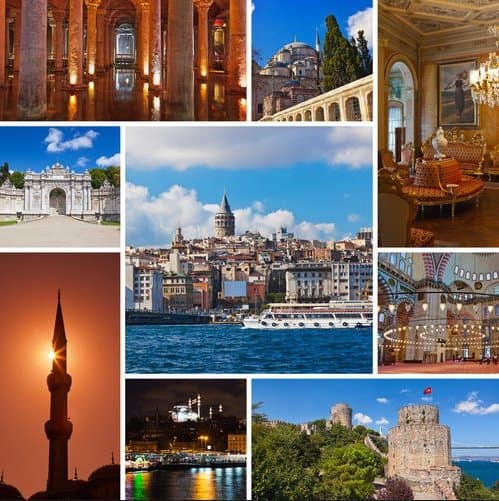
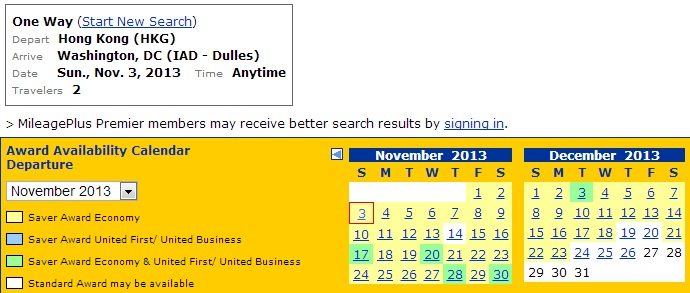
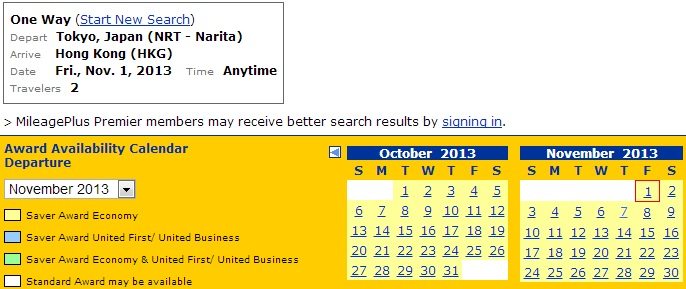
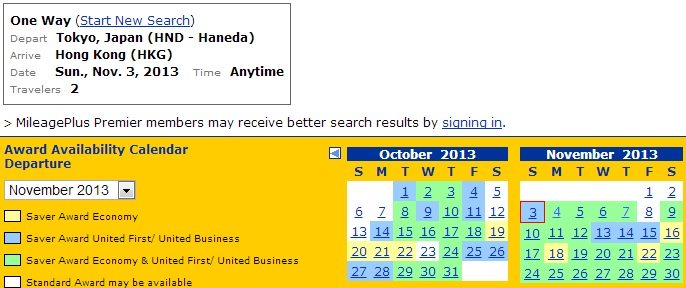
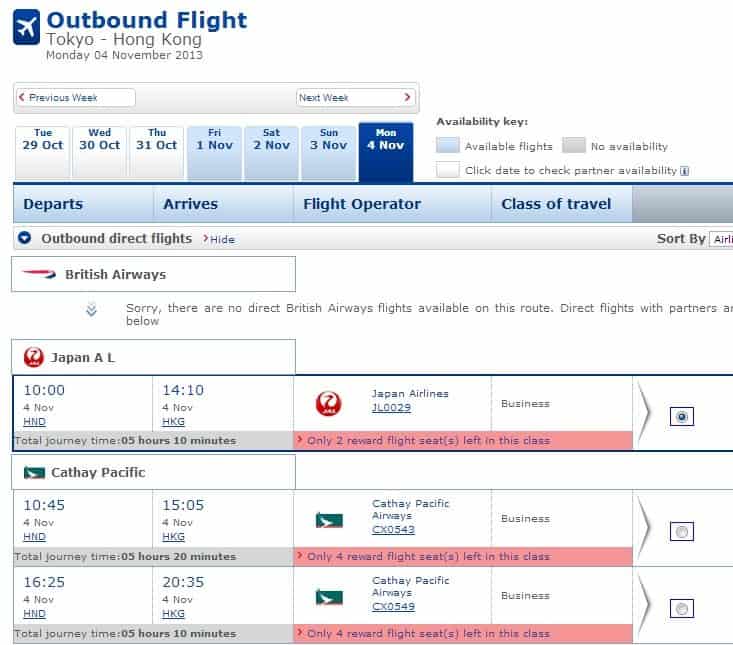
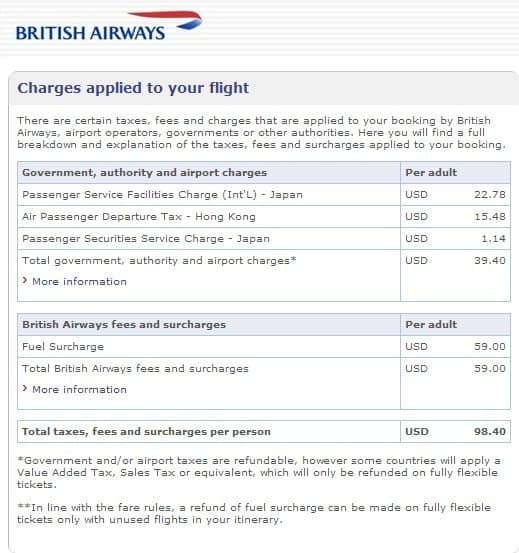
I really like these anatomy of an award posts. Do you think you can add route maps made on the great circle mapper? It would make the trip a lot easier to picture. Keep up the good work!
I disagree with the strategy here. The US 90k NA-Asia award is a clear winner, though since it could accommodate a HKG stopover within that price, why go ahead and spend an extra 40k avios and potentially expose yourself to another cancellation fee if a wrench is thrown into the works?
I understand the business class award space wasn’t available, though that availability changes over time, and you have 10 months before travel. Outside of the aforementioned wrench, you could have:
1. Waited until availability opened up, with the CX avios option in your back pocket
2. Booked in economy and sat on the chance to upgrade to C
3. Watched for a fare sale
4. Delayed commitment to Hong Kong as THE side trip. Hong Kong is easy to get to and you’ll surely get there with that stack of AA and avios, perhaps Anthony Bourdain or a friend makes a compelling argument for an alternative side trip between now and November
Again, time is more your friend than your enemy, no need to commit to a 2nd award so far out
ps. cool tip on istanbul in under 24
I too don’t get the point of what you’re doing. You’re giving up your open jaw and stopover, and spending extra miles. For what? Do you have plans to change those later on, or you just straight up not using those features?
I explained in the post why the open jaw and stopover don’t work in my particular situation. The award isn’t set in stone, either. British Airways charges $40 for award redeposits, and I’ve argued out of the US Airways $150 change fee for minor schedule tweaks. If more award space opens up, I’m not opposed to adjusting the itinerary.
I had a routing question and I’m a noob. We are going one-way only using United miles. Do you think we could do this: PEK>ZRH>VIE>IAD>HNL….with IAD>HNL being a one way that we would use at a later date?
I think I can answer my own question. It can’t be done that way.
Hey Bill, thanks for this. I’m a long time reader and fan of MV.
So I was looking through old US Airway posts and I wonder if if you could confirm some info:
– Can you book RTW trips with US Airways? Scott said in one comment LAX-MUC-NRT-LAX could work but you might have to call a number of times
– One of the sweet spots is from the US-Australia via Asia. I’ve seen routes through the pacific. Could you go through Europe to do this? Such as BOS-ZRH-BKK-SYD and then back through Europe?
I could see the top itinerary being allowed. In my experience, keeping the total number of segments low is very helpful in getting the awards ticketed.
Scott might be able to speak more on the potential of the second itinerary.
When using a USair business class award to asia, must all the segment be in business class in order for USair to ticket the reservation? I can’t see why you didn’t use coach availability to get to Hong Kong from NRT.
If United.com displays economy-saver availability, you can add those segments to a business class award without issue.
Trying out Cathay Pacific’s business class product was important to me, and the schedule lined up much better than the Star Alliance offerings. If business space becomes available from HKG-NRT, I would consider adjusting the award.
It is still possible to do the trip to HKG with Tokyo as a stopover. Let me make a few suggestions:
1. If you’re using the United tool, use the area code TYO instead of NRT or HND. That’ll pull up options from both airports. This also works for NYC, LON, etc. The ANA tool won’t take area codes but will usually pull up options from nearby airports automatically.
2. Depending on the day, I’m seeing up to 4 non-stops between different Toyko airports and HKG. For instance, Nov. 3 (a day you searched in your post) has 3 non-stops, all with business availability.
3. US allows a maximum of 8 segments, so instead of NRT/HND-HKG direct try booking a connection via ICN, PVG, BKK, SIN, etc. Even though BKK and SIN are outside of “North Asia”, you can transit through those cities so long as your destination is within the North Asia zone. For example, I’ve booked IAD-LHR-NRT-BKK-HKG as a valid North Asia routing with US.
4. Similarly, HKG-IAD should not be a problem if you consider connections such as HKG-BKK-NRT-IAD. You could even do HKG-BKK-VIE-IAD or another routing through Europe, so long as you don’t exceed 8 total segments.
5. Strictly speaking, stopovers are only allowed at the hub airports of the INBOUND carrier (although enforcement varies depending on the agent you get when you call in). To use Toyko as a stopover, your ICN-NRT should be on ANA. An Asiana flight on the same route would make the stopover invalid (although again YMMV).
6. I’m heading to a conference in SIN next month, but I want to stop in HKG before to visit my brother. IAD-SIN in F costs 160K points (South Asia) and getting a stopover in HKG was nearly impossible. My solution was similar to yours – I booked IAD-HKG in F with 120K US miles (North Asia) and added a separate HKG-SIN in J for 30K Aeroplan points round-trip. This works because Aeroplan and US have different zoning rules, and HKG-SIN is within a single zone according to Aeroplan. HKG-SIN on Cathay was another option for 40K Avios. In the end, I got the dates and routings I wanted for a total of 150K points instead of the 160K it would have cost with US alone.
For US award to HK, you mentioned it is ok to route through bkk/ sin even though they are outside north Asia, is to possible to have stopover in sin/bkk and still priced as North Asia award?
In theory, I believe you’re supposed to be charged for the most expensive region visited or transitted. Strictly speaking then, Bill’s US-North Asia award should price at 100K points because it goes through Europe. In actual practice, the price depends on the particular agent who picks up your call and how good their geography is. Most of them are American, and given the quality of US public schools these days…. 🙂
Here’s what I suggest:
1. Find all your flights ahead of time and record the dates, airports, and flight numbers.
2. Call up and tell the agent you want to book IAD-HKG in business class for 1 person leaving March 22 and returning April 7 (for example). Given this information, they’ll start building your trip as a North American-North Asia redemption.
3. Politely mention that you have some flights already picked out that you’d like to try. In my (admittedly limited) experience, the agent will either be (a) annoyed with you for being demanding or (b) happy you’ve done their work for them. At this point you can pretty much predict whether things will work out for you or not!
4. Start spoon-feeding them the flight details segment by segment. If you know the airport codes, that’s usually helpful to them. Be polite and don’t rush them. You want things to flow smoothly so the agent just keeps typing your data into the computer without having to fiddle around or look things up (and potentially decide they need to check with a supervisor or the international desk or someone else who may torpedo your plan).
5. Slip your desired (but perhaps not strictly legal) stopover in casually without drawing too much attention. “For the return, I’d like to leave Hong Kong on April 2 on Singapore Airlines flight SQ859 from HKG to Singapore SIN.” Give them time to enter the flight. When they ask for the next leg, say “I’d like to stopover in Singapore for 3 days, leaving on April 5. That would be on Turkish Airlines flight TK67 from SIN to Istanbul IST.”
6. If you get caught, be polite and play dumb. “Oh really? That’s not allowed? Oh darn. I didn’t realize that would change the price by 40,000 points. I guess I’m going to have to go back to the drawing board.” End the call nicely. You don’t want them to make a note on your file about what you’re trying to get away with, because you’re going to call back later and hope for a different agent.
7. If things don’t work out perfectly, you can always ask them to put a partial itinerary on hold to secure some of your segments while you play around with other options.
Just remember, be polite and try to make things as easy for the agent as possible. You want them to be an ally, not an adversary. Ultimately, Susie in Wichita doesn’t care what you do so long as it won’t get her in trouble with her supervisor, and US Air doesn’t care (much) so long as they made more selling you the miles than it costs them to buy the award seats from their partners.
Pretty much exactly my strategy too!
Why not go via IST to HKG (stopover) and then HKG to TYO (destination) and then NRT-IAD?
Definitely a good idea, but the flights didn’t line up on the well (times nor availability) on the day I needed to leave IST.
The CX intra-Asia business product is nothing to get excited over. Went HKG>BKK>SIN last fall in business on CX. The BKK>SIN leg had these retro manual seats.. BUT, it was definitely better than coach……..
I hope you get to take one of those great Istanbul tours. I can’t remember where I heard about it, but I’ve bookmarked it for my own potential IST stopover en route to Japan in 2014.